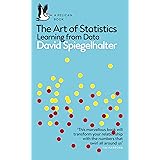Biases in Statistics Common Pitfalls
Biases in Statistics Common Pitfalls, Biases in statistical analysis can significantly impact the accuracy and validity of research findings across various disciplines.
These biases often stem from systematic errors in data collection, performance of research, or analysis processes.
Recognizing and addressing these biases is crucial for data scientists, statisticians, and anyone working with quantitative data to ensure reliable results and informed decision-making.
In this article, we explore five common statistical biases and discuss strategies to mitigate their effects.
Biases in Statistics Common Pitfalls
1. Confirmation Bias:
Confirmation bias refers to the tendency to favor information that supports one’s preconceived notions.
This can lead researchers to overemphasize data that aligns with their hypothesis while dismissing contradictory evidence.
To combat confirmation bias, actively seek out diverse perspectives and collaborate with others to maintain objectivity.
Peer review and open-mindedness can help minimize the impact of this bias.
2. Sampling Bias:
Sampling bias occurs when a study’s sample does not accurately represent the target population.
This can result from using non-random sampling methods or limiting the sample to a specific demographic.
To address this issue, utilize random sampling techniques and consider stratification to ensure equal representation across population segments.
3. Survivorship Bias:
Survivorship bias involves focusing solely on successful outcomes while ignoring those that did not survive or thrive.
This can lead to overly optimistic predictions and flawed decision-making.
To counteract this, gather comprehensive data sets that include both successes and failures, and challenge initial assumptions with additional information.
4. Anchoring Bias:
Anchoring bias occurs when individuals rely heavily on an initial piece of information (the “anchor”) when making decisions.
This can result in suboptimal choices based on incorrect or unrepresentative anchors.
To mitigate anchoring bias, seek out additional information to challenge the anchor and adopt structured decision-making processes.
5. Publication Bias:
Publication bias arises when the outcomes of research influence the likelihood of being published, particularly favoring statistically significant results.
This can distort the scientific literature and misinform public policy, scientific consensus,
and public perception. To combat publication bias, promote the registration of studies and acceptance of all results, regardless of their significance.
Encourage journals to publish negative results and replicate studies to foster a more balanced and transparent scientific dialogue.
Summary
Recognizing and addressing statistical biases is crucial for maintaining the integrity and reliability of quantitative research and analysis.
By understanding and implementing strategies to mitigate confirmation, sampling, survivorship, anchoring, and publication biases, data professionals can enhance the validity of their findings and contribute to more informed decision-making processes.
Continuous improvement in scientific methods and strategies will further aid in tackling these psychological biases and fostering a more accurate and robust understanding of the world around us.





